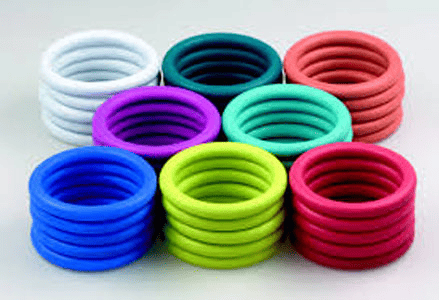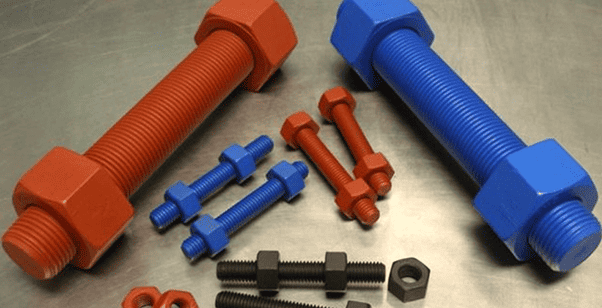A versatile finish that offers a great range of benefits, PTFE coatings are an ideal choice for products which need to be defended from volatile or corrosive chemicals.

What Are PTFE Coatings?
PTFE (or Polytetrafluoroethylene) coatings are high-temperature fluoropolymer coatings, which typically are made of one or two layers consisting of a primer and a topcoat. The result is a hard non-stick finish with excellent resistance to corrosion and abrasion. It is non-reactive and has an extremely high melting point. PTFE is a type of Teflon coating – a household name synonymous with durability and toughness.
The exact components of the coating are likely to vary according to the requirements of the product in question, but PTFE is primarily made up of technical materials, such as binders, pigments, solvents and resins. It’s possible to vary the composition to allow for resistance to chemicals, corrosion, weather, humidity and extremes of temperature, as well as the standard non-stick, low friction properties. It is even possible to create colour-coded coatings. A PTFE coating may be applied to a range of materials, such as stainless steels, carbon steels, and aluminium, titanium or nickel alloys, as well as softer substrates such as rubbers and plastics.
How the Coatings Are Applied
PTFE coatings are applied by experts, as specialist knowledge and equipment are necessary. To apply the coatings, the surface of the product in question is first prepared. This involves degreasing and grit-blasting to ensure the best possible results. The surface is primed, with special primers required if the finished product is intended for food-related usage, such as frying pans or baking tins. The coatings are then applied as a wet liquid with an HVLP spray gun. The product and its coatings are then cured in a well-ventilated industrial oven at temperatures ranging from 725° to 800° Fahrenheit. This process creates a dry film coating of a thickness of 5 to 35 microns, depending on the number of layers applied. Discover more about the coating process at websites such as https://www.poeton.co.uk/standard-treatments/electroless-nickel-ptfe/.

Where the Coatings Are Used
As well as being used by cookware and bakeware manufacturers, PTFE coatings are required by industries such as chemical, oil and gas, where it is used for release agents in mould tools. The coatings are commonly used in car manufacturing for engine components, as well as for seat mechanisms and other moving parts which must slide smoothly. Other popular items that have PTFE coatings include springs, bearings, gardening equipment and guide rails. It is increasingly used for medical equipment, as described here: https://www.medicaldevice-network.com/precision-medical-wire/how-sandvik-operators-use-wire-drawing-and-coating-to-optimise-your-medical-wire-components.
Choosing PFTE coatings for your product is a great means of protecting it from extremes of temperature, corrosion and abrasion. The smooth, friction-free finish makes it an excellent choice for both moving parts and food-related items. The finish is hard, durable and thin, meaning that coatings do not affect a part’s ability to fit with other components. With a wide and diverse range of applications, PTFE coatings are a popular and versatile solution for many industries.
